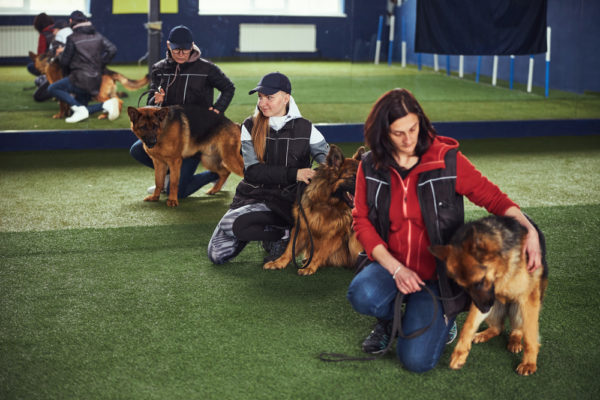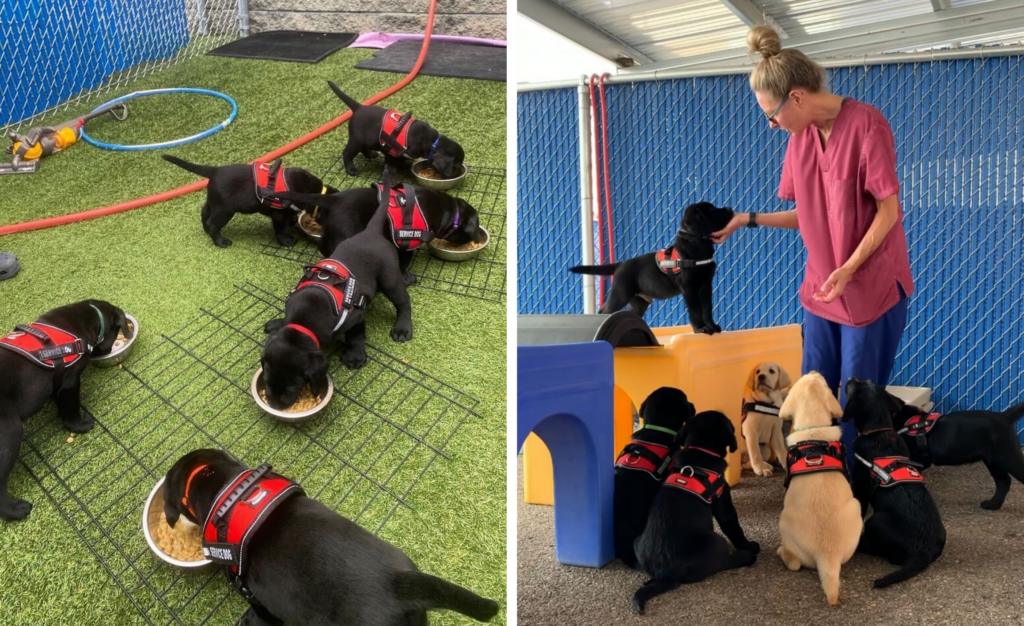Novice's Overview to Successful Dog Training at Home
Efficiently training a pet in the house requires a nuanced understanding of canine actions and efficient communication strategies. Developing clear training goals, using top notch rewards, and keeping uniformity throughout relative are vital elements. Additionally, incorporating training right into day-to-day regimens can enhance both engagement and retention. Many newbie fitness instructors run into obstacles that might hinder development. To navigate these intricacies properly, it's necessary to discover a number of crucial facets that can transform your strategy and result in a harmonious connection with your animal. What essential concepts should every novice grip to make certain success?
Understanding Dog Behavior
Comprehending canine behavior is essential for effective training and cultivating an unified relationship in between people and their canine friends. Dogs communicate primarily via body movement, articulations, and face expressions, making it important for proprietors to translate these signals properly. Recognizing habits such as tail wagging, grumbling, or shrinking can supply understandings into a canine's mood and objectives.

Typical behavioral issues, such as hostility, stress and anxiety, or excessive barking, often come from misunderstandings or unmet needs. Observing and addressing these concerns without delay can stop rise and make sure a positive training experience. By promoting a deep understanding of pet dog actions, owners can tailor their training approaches to fit their canine companions, ultimately causing a contented and mannerly pet dog.
Essential Training Devices
A well-equipped training space can considerably improve the efficiency of dog training in your home. Necessary training devices ensure that both the instructor and the pet can participate in efficient sessions that promote learning and bonding.

Buying a tough leash and a comfy, well-fitting collar or harness is vital for safety and security and control. These tools help establish boundaries and make certain the dog stays secure throughout training. Additionally, a marked training area, totally free from distractions, help concentration for both the pet dog and the instructor.
Training aids such as training pads, cones, or agility devices can likewise enhance the experience by presenting range and difficulties. Having a note pad or electronic application for tracking development can be indispensable, allowing you to keep in mind successes and areas for enhancement. Making use of these crucial devices will produce a positive training setting and lay the structure for reliable learning.
Producing a Training Regimen
Establishing a regular training regimen is necessary for reliable pet training at home. A well-structured routine not just assists in strengthening preferred behaviors yet likewise provides your pet with a complacency and predictability. To produce a reliable training see routine, start by recognizing certain training goals, such as basic commands, chain walking, or house-training.
Choose an assigned time each day for training sessions, preferably when your canine is alert and responsive. Procedure must be short, roughly 5 to 15 mins, to maintain focus and protect against tiredness. Consistency in timing and atmosphere will boost your pet's learning experience.
Include training into day-to-day tasks to strengthen skills. Practice commands throughout walks or nourishment, which incorporates discovering into all-natural routines. In addition, remain versatile and adjust the routine as required, accommodating your canine's energy levels and mood.
Positive Support Strategies
Positive reinforcement techniques are fundamental to effective pet training, advertising preferred actions via rewards as opposed to penalty. This technique uses positive stimuli, such as deals with, praise, or playtime, to urge pets to duplicate particular actions. The keystone of this method is timing; rewards need to be offered right away complying with the desired actions to develop a clear association.
When executing positive support, it is important to select rewards that are encouraging for your pet dog. High-value deals with, such as small website link pieces of hen or cheese, can be especially efficient throughout training sessions. Furthermore, varying the benefits can keep your canine's interest and excitement.
Beginning with easy commands, like "rest" or "remain," and gradually development to extra intricate tasks. Consistency is vital; guarantee that all member of the family use the exact same commands and reward systems to avoid confusion.
In addition, it is important to remain individual and stay clear of stress. Canines, like people, discover at their very own speed. By cultivating an encouraging training environment via favorable reinforcement, you can improve your dog's discovering experience while reinforcing the bond between you and your fuzzy buddy, preparing for effective training end results.
Usual Training Obstacles
While educating a pet at home can be a fulfilling experience, it typically includes a set of usual difficulties that can test both persistence and uniformity. One widespread problem is disturbance. Pet dogs may come to be easily averted by sounds, movements, or perhaps scents in their atmosphere, making it difficult to preserve their focus during training sessions.
One more obstacle is variance in commands and support. If member of the family utilize various signs or benefits, it can prevent and confuse the pet development. Developing a unified method is vital for reliable interaction.
Furthermore, pet dogs can experience stress or anxiety, particularly if they do not understand what is anticipated of them. This can cause unwanted behaviors, such as chewing or barking.
Ultimately, the timing of reinforcement is important (Dog training). Postponed benefits can lessen the performance of favorable support, as dogs may fail to connect the actions with the reward
Getting rid of these difficulties calls for dedication, clear interaction, and an organized training plan. Acknowledging and addressing these usual challenges will lead the way for a more successful and satisfying training experience in your home.
Conclusion
In final thought, successful pet dog training at home requires an extensive understanding of canine habits and effective interaction methods. By developing clear training objectives and making use of high-quality treats together with favorable support, the training procedure comes to be more satisfying for both the pet dog and the trainer.
Establishing a consistent training regimen is necessary for effective pet dog training at home.Favorable reinforcement methods are essential to reliable pet training, promoting desired behaviors with incentives instead than punishment (Dog training). By promoting a helpful training environment with favorable support, you can enhance your pet dog's knowing experience while strengthening the bond in between you and your hairy friend, laying the foundation for effective training outcomes
In web conclusion, successful pet training at home demands a detailed understanding of canine actions and effective communication approaches. By developing clear training objectives and making use of high-grade treats along with positive reinforcement, the training procedure becomes more rewarding for both the trainer and the pet dog.